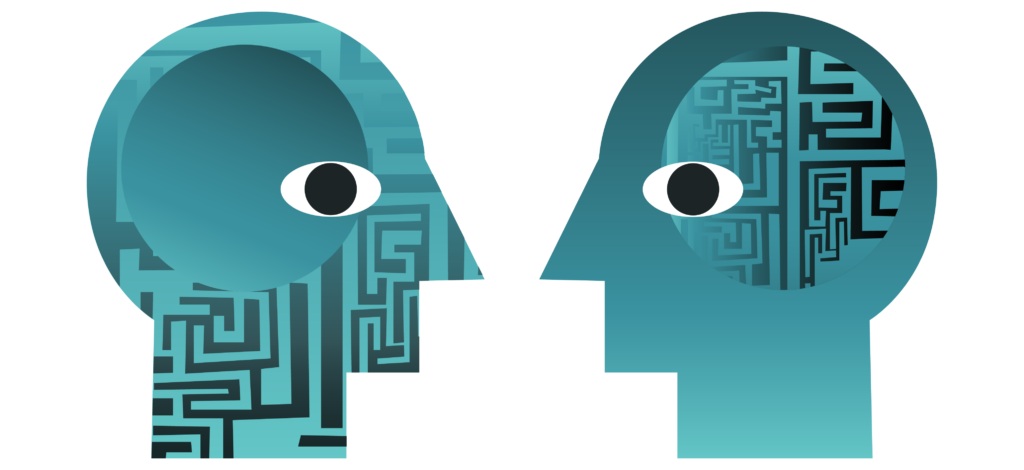AI: Heroes vs. Villains and the Ethical Landscape of Communications
With great power…
In August 2024, our CEO, Pinaki Kathiari, chaired the ALI Conferences AI for Communicators conference in New York City.
As all ALI Conferences seem to do, the week brought about many impactful conversations, lessons learned, and new friendships. This conference, in particular, also provided me with a lot of time for reflection on the use – and misuse – of AI.
My reflection, combined with several important conversations with Pinaki (where many of my thoughts below originate from or are inspired by – thank you, Pinaki, for letting me borrow some of your insights here), motivated me to author a blog post about a crucial and timely topic:
The ethical use of Artificial Intelligence.
Since the conference took place in Manhattan, it was only natural for my superhero-loving brain to conceptualize my thoughts in comparison to heroes vs. villains in Gotham City. Since I’m writing about AI, I leaned in and used AI to help add on to some of these ideas below.
The hero’s challenge and the villain’s plight
Imagine Gotham City, a place where the line between good and evil is starkly drawn, where light battles darkness at every turn.
Much like Batman patrolling the streets to protect his city, communicators and leaders must navigate the complex and evolving landscape of artificial intelligence.
Now, I’m not saying that AI is “the darkness.” I’m simply saying there is that duality to AI.
We’ve seen AI in films — there are many positive AI characters (Rosie the Robot from The Jetsons, WALL-E, etc.) that we know and love; however, there are also some intense AI-ntagonists. Take Agent Smith from The Matrix or VIKI from I, Robot, for example.
“With great power comes great responsibility” – know what I mean?
Inherent duality
There should always be caution when approaching new inventions and the emergence of new concepts.
For example, just as the automobile evolved with significant safety and regulatory changes, AI requires a similar path of thoughtful integration into society. Historically, figures and brands have been viewed as “heroes” or “villains” depending on perspective and context. Likewise, AI can be seen in many lights, but it’s our responsibility to steer that perception toward the positive.
Our decisions can shine a light on ethical practices or cast a shadow that allows misuse to thrive. Today, we stand at a crossroads where our choices will define whether AI becomes a beacon of hope or a manipulation tool.
It is up to communicators and leaders in organizations to be powerful voices for their people – to set the tone and lead by example in how we use AI.
Our great responsibility
AI is a powerful tool capable of transforming industries and enhancing our daily lives. But, like any tool, its impact depends on how we use it.
Think of AI as a double-edged sword. On one side, it promises immense good – improving efficiencies, driving innovation, and creating opportunities we never thought possible. On the other, it harbors the potential for misuse, privacy violations, and even harm if not handled with care.
The excitement and investment in AI are palpable. We’re talking trillions of dollars at play, and with such immense wealth comes enormous potential.
This potential extends beyond technology companies to us as a society. We have the chance to use these advances responsibly and ethically, ensuring that the benefits of AI are distributed fairly and that the risks are mitigated.
One of the key themes we must embrace is the concept of using AI with our eyes wide open. This means being fully aware of both the capabilities and the limitations of AI. It means understanding the potential biases in AI algorithms and actively working to eliminate them. It means being transparent about how AI is used and ensuring that it respects the privacy and dignity of individuals.
As communicators, we play a pivotal role in this journey. We are the bridge between technology and humanity.
Our words, narratives, and strategies can either shine a light on the ethical use of AI or plunge us into darkness.
It is our duty to advocate for AI practices that uphold the highest ethical standards.
Moral considerations
By staying aware of the moral dilemmas we face with AI, we can better combat them. Identifying the villain can help us be more aware when we’re heading toward dangerous waters. To be “on the nose” about it, I asked AI for some help in generating these considerations that you’ll read below.
Here are a few examples of “rough seas” ahead:
- Bias and Fairness: AI systems can perpetuate and even amplify existing biases. It’s crucial to ensure that these systems are trained on diverse datasets and that we continually monitor and adjust them to promote fairness.
Ask yourself: How do we ensure that AI serves everyone equally? - Privacy and Surveillance: AI can collect and analyze vast amounts of data. While this can lead to more personalized experiences, it raises significant privacy concerns.
Ask yourself: How do we balance the benefits of AI with the need to protect individual privacy? - Autonomy and Control: As AI becomes more integrated into our lives, we must consider how much control we are willing to cede to machines.
Ask yourself: How do we ensure that humans remain in the loop and that AI serves to augment rather than replace human decision-making? - Transparency and Accountability: AI decisions can often be opaque, making it difficult to understand how conclusions are reached. We must strive for transparency in AI processes and hold those who create and deploy AI systems accountable.
Ask yourself: How do we build trust in AI technologies?
Let us remember that we stand at a critical juncture.
By embracing ethical principles, we can ensure that this powerful technology becomes a force for good, lighting the way toward a brighter future.
Guiding lights
Despite our feelings about AI and level of “buy-in” to embracing the tool (side note: Pinaki authored a really awesome blog post about that), our choices today will shape the future of AI and its impact on our world.
Here are three principles for ethical AI use to keep top of mind:
- Transparency: As I was (above) in this blog post, be open about how AI is being used and what data is being collected. Communicate clearly with stakeholders about the purpose and impact of AI systems.
- Accountability: Establish clear lines of responsibility for AI decisions and actions. Ensure that there are mechanisms to address any adverse consequences of AI use.
- Inclusivity: Involve diverse perspectives in the development and deployment of AI. Strive to create AI systems that serve all members of society equitably.
Please know this is not an exhaustive list, but just one to get us started. In this ever-evolving landscape, we must be open to continuous learning. This commitment to ongoing education and adaptation will ensure that our use of AI remains ethical.
The moral of the story
While I could continue writing about this topic for quite some time, I’ll leave you with a story that Pinaki shared at the conference which I believe accurately illustrates another essential aspect of approaching AI.
There is a famous story called “The Farmer and His Horse” – and it is a nice, gentle forewarning for folks.
I asked AI to summarize the story for me for this blog post because why not use AI for good? It goes like this:
Once upon a time, an old farmer had worked his crops for many years. One day, his horse ran away. Upon hearing the news, his neighbors came to visit.
“Such bad luck,” they said sympathetically.
“We’ll see,” the farmer replied.
The next morning, the horse returned, bringing with it three other wild horses.
“How wonderful,” the neighbors exclaimed.
“We’ll see,” replied the old man.
The following day, his son tried to ride one of the untamed horses, was thrown, and broke his leg. The neighbors again came to offer their sympathy for his misfortune.
“Such bad luck,” they said.
“We’ll see,” answered the farmer.
The day after, military officials came to the village to draft young men into the army. Seeing that the son’s leg was broken, they passed him by. The neighbors congratulated the farmer on how well things had turned out.
“How wonderful!” they said.
“We’ll see,” said the farmer.
Do you understand the message here?
Events in life are often neither inherently good nor bad; it’s our perception and the passage of time that define them.
The farmer’s composure, levelheadedness, and refrained use of “we’ll see” illuminate the wisdom of remaining detached from immediate judgments about circumstances.
Sometimes, we must sit back and wait to see how things all shake out.
That’s rather similar to how some of us feel about the emergence of AI right now, right?
The good news is that we’re all in it together. Let’s navigate this new landscape with wisdom, ethical principles, and a commitment to creating a better future for all.
Because we have a voice, let’s use it wisely.








